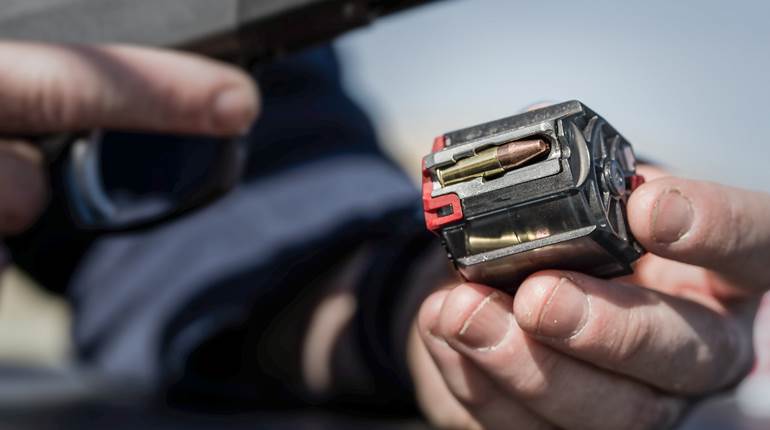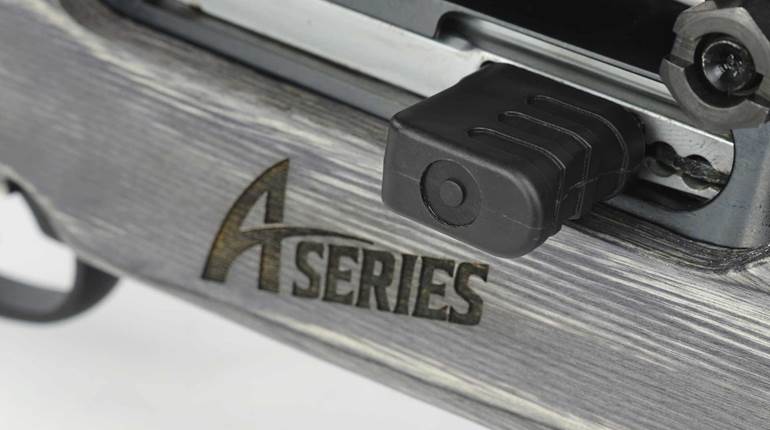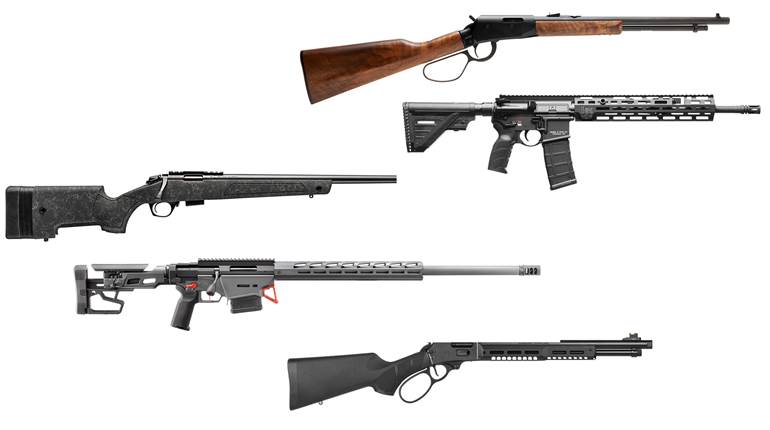
Before the untimely closing of Winchester’s New Haven, Conn., plant in 2006, the company offered an almost-inconceivable array of Model 70s. With Fabrique Nationale’s Columbia, S.C., facility now well-established, it makes sense that some of Winchester’s more popular Model 70s would re-emerge. One such model is the Safari Express chambered in .375 H&H Mag., .416 Rem. Mag. and .458 Win. Mag.
Many hunters, professional and guided, decry anything but controlled-round feeding for dangerous-game rifles, and the Safari Express appropriately features Winchester's field-proven Pre-'64-style full-length claw extractor. Ejection is provided by a spring-loaded blade-type ejector fitted to the receiver. The bolt locks by way of dual, opposed lugs at its front, and the root of the bolt handle at its rear serves as a third lockup point. The bolt release button is located on the left, rear side of the receiver. Model 70 aficionados will take comfort in the familiar three-position safety. Only a small portion of the bolt body, along with the handle, knob, safety, and bolt shroud have a matte-blue finish; the bolt body itself is jeweled for both functional and cosmetic purposes.
Unlike standard Model 70s, the Safari Express has dual recoil lugs. The forward lug, which measures 0.50x0.750x0.50 inches and begins approximately 4 inches forward of the receiver, is induction-brazed to the barrel. Its second lug, machined into the front of the receiver, measures 0.356x1.173x0.437 inches. The lugs are glass-bedded to the walnut stock, and the compound is likewise used in the tang area at the receiver’s rear and at the holes for the action screws.
To facilitate mounting an optic, the receiver is drilled and tapped, though hole spacing for the rear mount is specific to the Safari-caliber model. Depending upon individual preference, the Safari Express’ M.O.A. Trigger System might please or incense. It is of modular design and is not user-adjustable. That being said, the test rifle’s trigger exhibited virtually no creep, take-up or overtravel while breaking at 4 pounds, 4 ounces—about perfect for a dangerous-game rifle.
The Safari Express’ 24-inch barrel measures 1.22 inches at the receiver and 0.725 inches at the muzzle, where it ends in a recessed crown. Atop the barrel is a windage- and elevation-adjustable express-style rear sight and a hooded, ramp-type front with a brass bead that is dovetailed into the base. Twelve inches rearward of the front sight is a barrel band front swivel base, which is preferred on larger-caliber rifles as it reduces the discomfort that can occur during recoil on such a rifle with a sling swivel stud in the fore-end.
A one-piece steel bottom metal/trigger guard assembly is rigid and durable, and the hinged floorplate is released by depressing a latch in front of the trigger guard. The follower is aluminum, and the magazine holds three rounds in a staggered-column.
The test rifle’s straight-grained, dense walnut stock undoubtedly contributed to its 9-pound overall weight. Adorning the fore-end and pistol grip was finely executed checkering, which not only added to its appeal but also enhanced purchase. In addition to the dual recoil lugs, the Safari Express has dual steel stock reinforcing crossbolts to further prevent stock splitting during recoil. The second sling swivel stud on the butt sits below flush and is secured via two screws. Capping the buttstock is a 3/4-inch-thick Pachmayr Decelerator rubber recoil pad that’s offset by a 1/4-inch-thick black spacer.
To test the Model 70 Safari Express, we topped the .458 Win. Mag.-chambered rifle with a Trijicon 3-9X AccuPoint riflescope in Leupold STD bases (Win. 70 Exp RVF) and STD Medium Rings. To evaluate accuracy, the rifle was shot from a Caldwell Lead Sled Solo from 100 yards, and the average was resultant of five consecutive, five-shot groups. Function-testing was conducted as rapid-fire drills.
Overall, the Safari Express not only functioned flawlessly, it exhibited commendable accuracy. Of the three loads, the most accurate proved to be Winchester’s Supreme Safari 500-grain Nosler Partition, averaging 1.29 inches for 25 shots. Not far behind, though, was Federal’s Cape-Shok 500-grain Barnes Triple-Shock X-Bullet, which averaged 1.49 inches. Even the more “value-priced” Winchester Super-X 510-grain Soft Point grouped into 1.87 inches. One cannot ask much more from a dangerous-game rifle.
The rifle’s iron sights were of excellent quality and seemingly durable. Our only qualm was that at times the brass bead on the front sight was difficult to pick up quickly in low-light conditions. The rifle came to the shoulder quickly, though it’s worthy of note that the Decelerator recoil pad is a bit tacky. Still, the recoil pad, along with the rifle’s heft, were both welcomed help in attenuating recoil. Fit and finish of the Safari Express was also very good, showing consistency throughout.
Considering the Safari Express' performance and that it has a suggested retail price of $1,279 with real-world pricing that is likely less, it is a real bargain.
Manufacturer: Winchester Repeating Arms; (801) 876-3440; www.winchesterguns.com
Caliber: .375 H&H Mag., .416 Rem. Mag., .458 Win. Mag. (tested)
Action Type: bolt-action, repeating center-fire rifle
Receiver: matte-blued, forged 4140 chromemoly steel
Barrel: matte-blued 24", hammer-forged 4140 chromemoly steel
Rifling: 1:12" RH twist (.375 H&H Mag.); 1:14" RH twist (.416 Rem. Mag. and .458 Win. Mag.)
Magazine: three-round-capacity
Sights: windage- and elevation-adjustable express-style rear; ramp-type front with brass bead; drilled and tapped for optic
Trigger Pull: single-stage; 4 lbs., 4 ozs.
Stock: American walnut: length of pull, 13¾"; drop at heel, 15/16"; drop at comb, 9/16"
Overall Length: 44¾"
Weight: 9 lbs.
Accessories: owner’s manual
Suggested Retail Price: $1,279






































